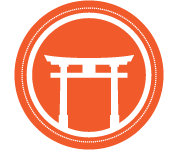Aikido in the Age of Artificial Intelligence
Inryoku VOLUME 5 ISSUE 8
By Josh Paul, AOSB Head Instructor and the SquareSpace AI
““I am putting myself to the fullest possible use, which is all I think that any conscious entity can ever hope to do.””
Artificial intelligence wrote this newsletter.
Well, not exactly. It inspired this newsletter. The article written by SquareSpace’s new AI app is at the end of the page. It’s not bad, but also not very readable. It doesn’t sound like me, although it says all the right things about aikido in the age of AI. And if you don’t know me or if you are unfamiliar with my writing, you might not realize that a robot wrote it.
Saying we’re afraid of a new technology has become a cliché. Relatively speaking, most new consumer technology—something you’d buy at Best Buy—is not truly terrifying, and it is usually quickly embraced and rendered mundane. However, this AI technology feels different. It’s not just that a machine can string together bits of information culled from the internet and regurgitate it according to grammatical rules. It’s terrifying (at least to me) because it doesn’t sound like a machine. It sounds like a person. Sure, the copy is kind of schmaltzy and impersonal, but it doesn’t sound robotic. The app is also fast: it produced a 400-word article in less than a minute.
Unlike the presumed, labor-saving benefits promised by such AI apps, most aikido dojo are do-it-yourself, labor-intensive enterprises. Sometimes there's a board or committee that collectively manages the business side of things, but the day-to-day work is done by individuals intimately connected to the dojo and the art. Their efforts and personalities permeate every aspect of the dojo and the practice. A dojo is organic, changing, and variable, and it brings people together. And the member’s attention to all the small details of the dojo–the ritualized cleaning, lining up for class, folding hakama–create and maintain the dojo's atmosphere, and the experience. This cannot be replicated by a computerized, artificial “hack.”
Likewise, there is no shortcut or hack to learning aikido. No amount of YouTube, Reddit, or analysis of the demonstration style aikido most often trending on Instagram can replace the experience of the dojo. Training is live and in-person, visceral, and personal. There is risk and safety, conflict and resolution, and lingering sensations of centeredness, focus, and soreness.
O’sensei said that aikido is the fitting together of opposing elements like fire and water, yin and yang, or perhaps uke and nage through ki (or breath) to create a third element that could be cultivated and trained. This third element—bound attractive forces—he called inryoku. Is the same type of bonding possible with AI? Are movies and stories about machines overrunning humanity alarmist? Do these new AI apps only serve to further distort our idea of reality by producing copies of things that had no original or copies of copies?
In the midst of this, aikido continues to provide connection with others, and sweaty, life-based experiences. While AI may provide shortcuts to difficult tasks and chores, it cannot replace real-life experiences. Well, at least not yet.
The following is the verbatim persuasive argument generated by the SquareSpace AI app.
Aikido: Harnessing the Essence of Humanity in the Age of AI
In the era of rapid technological advancement, where artificial intelligence (AI) boasts its capabilities to redefine the world, the age-old practice of Aikido remains an invaluable discipline that embraces the essence of humanity. While AI offers remarkable efficiency and automation, it lacks the depth of human connection and wisdom that Aikido cultivates. As we navigate the uncharted waters of the AI revolution, Aikido provides us with an essential anchor, empowering us to remain centered as we evolve alongside the machines.
Human connection lies at the heart of Aikido, something that AI can never fully comprehend or replicate. Aikido teaches us to sync our mind and body, allowing us to harmonize with our opponents. The practice emphasizes empathy, mutual respect, and cooperation, values that cannot be taught to machines. While AI may excel in analytical thinking and problem-solving, it lacks the emotional intelligence and understanding of human behaviors necessary for authentic connection. Aikido ensures that we retain our humanity, even in a world dominated by machines.
Furthermore, Aikido teaches adaptability and resilience, equipping us with the necessary skills to thrive in the presence of AI. As technology continues to transform our lives, the ability to adapt becomes paramount. Aikido fosters a mindset of continuous growth and learning, preparing practitioners to embrace change. In contrast, AI, despite its advancements, remains bound by its programming and cannot adapt spontaneously. Aikido practitioners honing their skills are well-prepared to navigate the uncharted terrain of an AI-driven society.
Another vital aspect of Aikido in the age of AI is the cultivation of mindfulness and presence. With AI constantly bombarding us with information and distractions, it is increasingly challenging to maintain focus and clarity of mind. Aikido offers a sanctuary from the noise and encourages us to be present in each moment. The practice of mindful movement and breath control not only enhances our physical abilities but also sharpens our mental acuity. In a world overwhelmed by technology, Aikido offers a sanctuary, teaching us to value the power of presence amidst the chaos.
Moreover, Aikido is uniquely positioned to address the ethical dilemmas associated with AI. As machines become more autonomous, we must address questions surrounding the responsible use of AI and its impact on society. Aikido's philosophy transcends physical combat by encompassing a holistic approach to life, emphasizing ethics and compassion.




